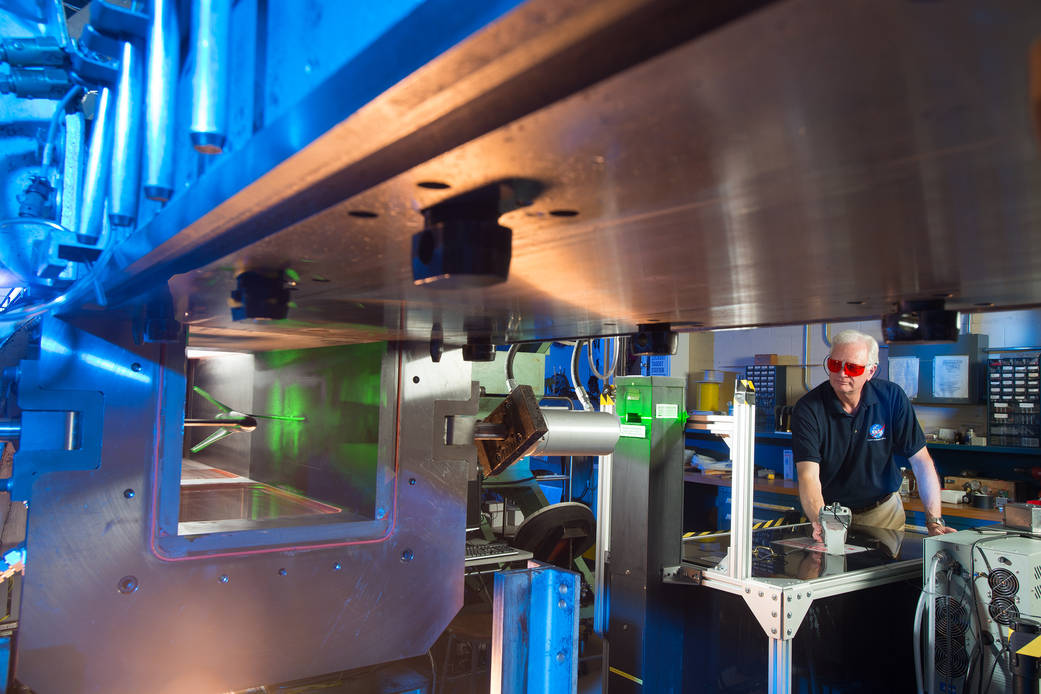Supersonic aircraft can greatly reduce air travel time. But, because of the sonic boom, noise caused by shock waves, supersonic commercial flight is not permitted over the United States.
As part of an effort to reduce sonic boom noise and permit overland flight, researchers at NASA Glenn, along with others at Ames and Langley research centers, have been investigating how the jet exhaust plume from the engine interacts with the shock wave created from the wing and tail sections of the aircraft traveling at supersonic speeds.
In this image, NASA Glenn Researcher Randy Locke sets up equipment for a laser testing technique in the 1 x 1 wind tunnel, which will be used to obtain airflow data. This method, called Particle Image Velocimetry, uses a high-powered laser beam to illuminate small particles introduced into the airstream. High-speed photos are taken and used to determine the velocity of the airflow.
The plume and shock interaction study was developed to collect data for computational code validation. Configurations were tested to simulate the propulsion pod and the tail section from a low boom aircraft concept.
Image Credit: NASA
Bridget R. Caswell (Wyle Information Systems, LLC)



























